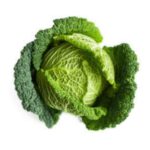How to Grow Cabbage in Canada
Cabbage is a member of the Brassica family, which also includes broccoli, Brussels sprouts, and kale. It is a cool weather crop that can be grown in all parts of Canada.
Cabbage can be sown directly in the garden, or started indoors in pots and transplanted outdoors later.
This article will give you tips on how to grow cabbage in Canada, including when to sow the seeds, how to thin the plants, and how to harvest the cabbage heads.

Canada Cabbage
Why grow cabbage?
Cabbage is a cool season crop that can be grown in Canada from early spring to late fall. It is a hardy vegetable that tolerates frost and can even withstand some snowfall.
Cabbage is a nutritious vegetable that is low in calories and high in vitamins and minerals, making it a great addition to any diet.
There are many different varieties of cabbage available, so there is sure to be one that suits your taste.
Cabbage is relatively easy to grow, and only requires a few hours of sunlight each day. It can be grown in both containers and gardens, making it a versatile plant.
Cabbage can be harvested at any stage of growth, but the earlier it is harvested, the more tender it will be.
With proper care, cabbage can provide you with fresh, healthy vegetables all season long.
Cabbage Varieties: best for Canada
There are many varieties of cabbage that do well in Canada. Some of the best include:
Savoy cabbage: This variety has crinkly, dark green leaves and a milder flavor than other types of cabbage. It’s a good choice for both cooked and raw dishes.
Red cabbage: As the name suggests, this type of cabbage has deep red leaves. It’s slightly sweeter than other varieties and makes a beautiful addition to salads or stir-fries.
Green cabbage: This is the most common type of cabbage, and it has firm, light green leaves. It’s versatile and can be used in a variety of dishes, from soups to slaws.
Soil Requirements
Cabbage is a cool-weather crop that grows best in Canada from September to early November, or from late February to mid-April.
Head formation is triggered by shorter days and cooler temperatures, so it’s important to choose a cabbage variety that matures quickly.
To grow cabbage, you will need:
-well-drained, fertile soil
-a sunny location
-cabbage seeds or seedlings
Your soil should be rich in organic matter and have a pH of 6.0 to 7.0. Add compost or manure to your garden bed before planting cabbage seeds or seedlings.
Cabbage loves sunshine, so make sure to choose a spot in your garden that gets at least six hours of sun per day.
Plant cabbage seeds about ¼ inch deep and 18 inches apart in rows that are 30 inches apart.
Planting Instructions: when and how
To plant cabbage, start by preparing the soil.
Cabbage likes well-drained, nutrient-rich soil.
Add compost or manure to the soil to help improve drainage and add nutrients.
Next, direct seed or transplant seedlings into the garden. Space plants 18-24 inches apart in rows that are 24-36 inches apart. Once plants are established, thin them to 12-18 inches apart.
Water cabbage regularly, especially during dry periods. Cabbage heads will form more quickly if plants are kept evenly moist.
Use a soaker hose or drip irrigation system to avoid wetting the leaves, which can lead to disease problems.
Grow Cabbage in Canada, it's not that hard you see. Just plant the seeds in spring, and soon you'll have a crop. Water it and give it sun, and watch it growing tall. protected from the frost, your cabbage will be perfect!
Chappy The Gardener
Organic Fertilizing
Organic fertilizing is key to growing a bountiful cabbage crop in Canada.
Cabbage is a heavy feeder, so regular applications of organic matter are essential to keep the plants healthy and productive.
Compost or well-rotted manure worked into the soil before planting will give the young plants a boost, and continued applications throughout the growing season will keep them going strong.
Side-dressing with compost or manure when the plants are about six weeks old, and again when they begin to form heads, will give them the extra nutrition they need to produce large, crisp heads of cabbage.
Cabbage loves nitrogen, so blood meal or other high-nitrogen organic fertilizer can also be used throughout the season to promote growth.
Be careful not to overdo it, though, as too much nitrogen can result in lush foliage but stunted head development.
Watering
Cabbage is a cool season crop that does best in full sun. The soil should be rich in organic matter and well-drained.
Cabbage can be planted as early as two weeks before the last frost date in your area.
To ensure a good head of cabbage, water regularly and deeply.
Cabbage needs about 1 to 1 1/2 inches of water per week, either from rainfall or irrigation.
Apply water at the base of the plant rather than overhead to avoid wetting the foliage and encouraging disease.
Pests and Diseases
Cabbage is susceptible to a number of pests and diseases, many of which can be controlled with preventive measures or treated with organic methods.
Some of the most common problems include:
-Aphids: These small, soft-bodied insects suck the sap from cabbage plants, causing them to wilt and discolor.
Aphids can also transmit viral diseases. Control aphids by handpicking, if possible, or use a strong blast of water to knock them off the plant. Avoid using insecticidal soap or oil sprays as they can also harm beneficial insects and other garden plants.
-Clubroot This fungal disease causes roots to swell and turn brown, black, or purple.
Clubroot can spread quickly, especially in wet weather. It is most common in poorly drained soils, so avoid planting cabbage near other susceptible plants such as tomatoes.
Harvesting
Cabbage is a cool weather crop that can be planted in early spring or late summer, depending on the region.
In Canada, cabbage can be harvested from late summer to early winter.
To harvest cabbage, wait until the heads are large and firm. Cut the heads off at the base with a sharp knife. If you are growing savoy cabbage, cut the leaves away from the head to avoid damaging them.
Cabbage can be stored in a cool, dark place for up to two months.
To prolong its shelf life, trim away any damaged leaves and keep the head whole. Cabbage can also be frozen for up to six months.
Tips for success
Cabbage is a hearty vegetable that can be grown in Canada with success.
Follow these tips for the best results:
1. Choose the right variety of cabbage for your growing region. Some varieties are better suited to cooler climates while others do well in warmer regions.
2. Start seeds indoors about 6-8 weeks before the last frost date in your area. Sow seeds thinly in rows on a seed starting mix and keep moist.
3. When seedlings are about 4 inches tall, thin them out so that only the strongest plants remain. transplant seedlings into larger pots if necessary.
4. Harden off seedlings by slowly acclimating them to outdoor conditions over 7-10 days prior to planting out.
5. Plant cabbage in full sun in well-drained soil rich in organic matter.
In conclusion, growing cabbage in Canada is not difficult, but there are a few things to keep in mind.
The most important thing is to choose a variety of cabbage that is suited to the Canadian climate.
Cabbage need a lot of water, so be sure to water them regularly. Be sure to fertilize your cabbage plants and protect them from pests and diseases.
With a little care, you can enjoy fresh, homegrown cabbage all summer long!
Helps Us Grow – Share If You Like









